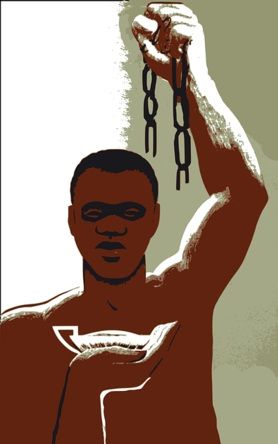


In the early 1800s, then General Andrew Jackson ordered for the destruction of a Maroon settlement. During the Second Seminole War, Osceola and John Horse, two mixed heritage Seminoles, fought against the colonial army, and by 1835 they were planning mass revolts to free the enslaved. They orchestrated large scale attacks that were successful in destroying nearly 17 plantations and freed as many as 500 slaves.
During 1836, the Seminoles were able to enjoy the fruits of their labor, with victories at every major engagement with U.S. troops. Eventually, John Horse signed a treaty with General Jesup to end the war.
Although in the years that followed the treaty, betrayal and complete disregard of the rule of law led to thousands of Seminole and Africans being exiled to Indian country in the midwest, their rebellion still stands as the largest and most successful in American History. Osceola, John Horse & the Black Seminoles set the stage for revolt, rebellion and the quest for liberation and they are hidden figures no more.
Georges Biassou (Born: January 1, 1741, Haiti and Died: July 14, 1801, St. Augustine, FL)
Maroon loyal to the Spanish Crown



“In December, 1795, Georges Biassou led his followers to St. Augustine, Florida where he was recognized as the General of Florida’s black militia and defended that Spanish colony against Seminole Indian attacks. Jean-François led a larger group to Cádiz, and later fought for Spain in Orán. Smaller groups of the black exiles of Saint Domingue sailed for Panama, Guatemala, and the Yucatán, where they continued to serve Spain as black militiamen.”
“Seasoned by war against French planters, French and British troops, and their own countrymen, and well-acquainted with “dangerous notions” of liberty, equality, and fraternity, despite their monarchical rhetoric, these men became objects of fear throughout the Atlantic world. George Biassou died in Florida in 1801 where, after an elaborate funeral, the parish priest recorded him as “the renowned caudillo of the black royalists of Santo Domingo.” The home where he lived in Saint Augustine, Florida now bears an historic marker.”




Recent Comments